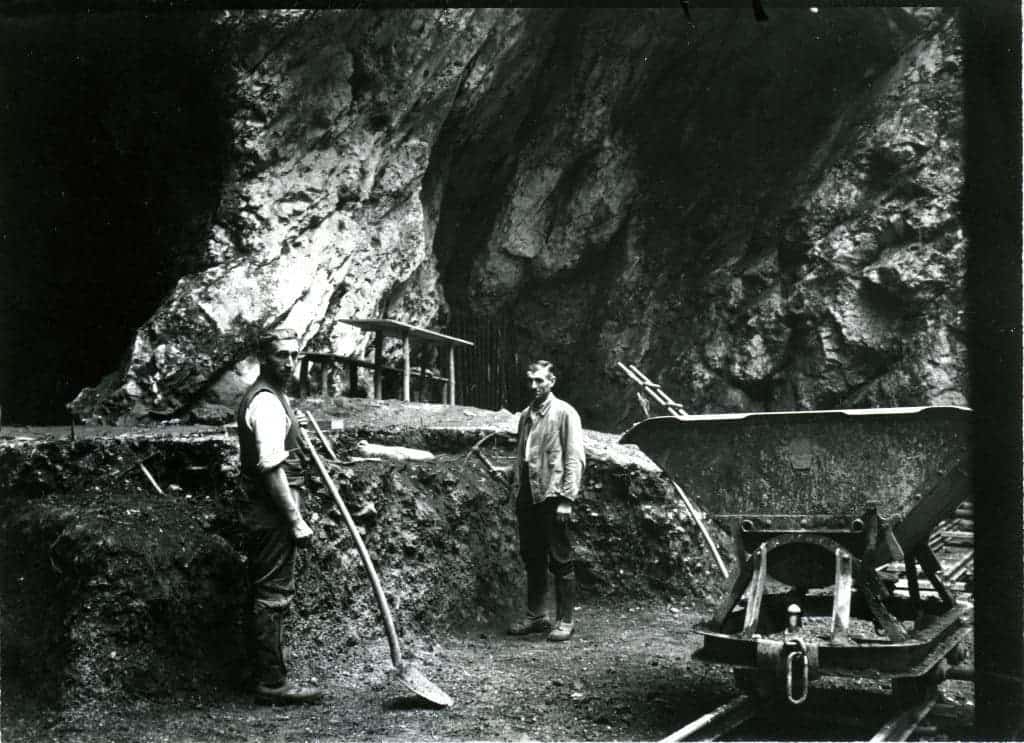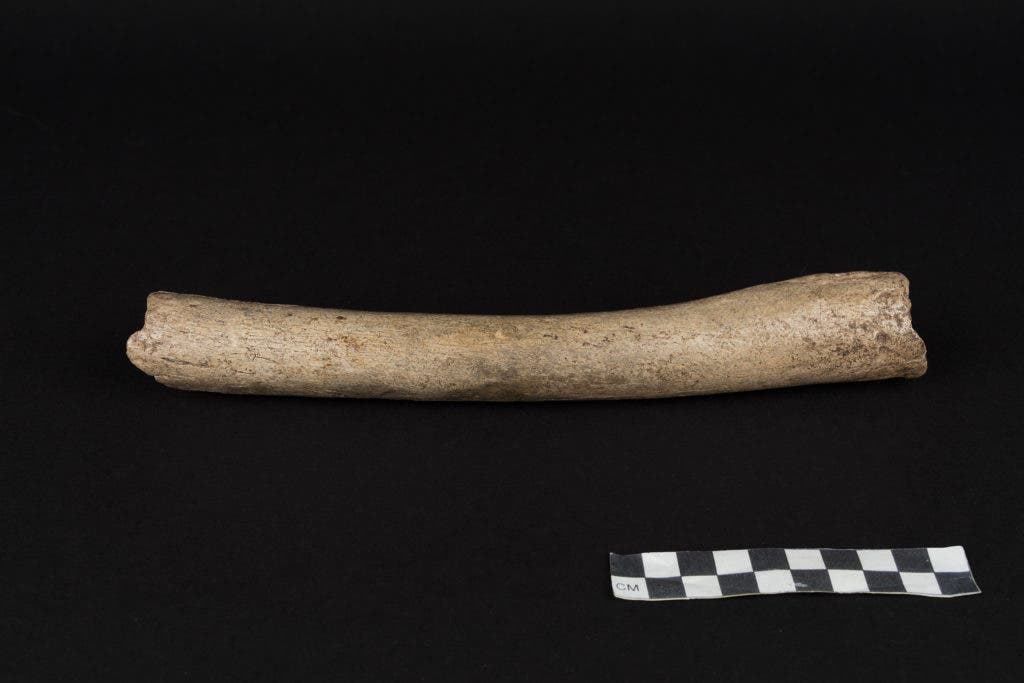The femur of an archaic hominin discovered in Europe suggests that the relationship between Neanderthals and modern humans was far more complex than meets the eye. Genetic data recovered from the femur suggests an intermediate out-of-Africa hominin migration occurred between 470,000 and 220,000 years ago, after the ancestors of Neanderthals arrived in Europe. The hominins belonging to a lineage closely related to modern humans interbred with the Neanderthals, leaving their mark on the Neanderthal mitochondrial DNA well before cultural exchanges between modern humans and Neanderthals became common 50,000 to 40,000 years ago.

Excavations at the entrance of Hohlenstein-Stadel cave in 1937, the year when the Neanderthal femur was discovered. Credit: Museum Ulm.
Mitochondrial DNA (mtDNA or mDNA) is the DNA contained in mitochondria, cellular organelles inside your cells that convert chemical energy from food into a form that cells can use, adenosine triphosphate (ATP). Many people are not aware that the human cell has two types of DNA: Nuclear DNA and Mitochondrial DNA. These make up two separate genomes – a nuclear DNA genome (which is linear in shape) and the Mitochondrial DNA genome (which is circular). Mitochondrial DNA is pretty short, in that it only contains 37 genes.
What is also peculiar about MtDNA is that it’s inherited exclusively on the maternal side – males and females alike inherit a copy of MtDNA from their mother. Nuclear DNA, on the other hand, is inherited equally from both parents; a child will inherit 50% of their nuclear DNA from the mother and the other 50% from their father. What makes MtDNA very powerful in genome-wide studies, however, is that it gets passed down almost entirely unchanged, through the maternal line.
New insight into the evolution of Neanderthals

Hohlenstein-Stadel femur remains (HST), displaying archaic features. Credit: Oleg Kuchar © Photo Museum Ulm.
Researchers at the Max Planck Institute for the Science of Human History and the University of Tübingen sequenced the MtDNA of a Neanderthal femur found at the Hohlenstein-Stadel Cave in southwestern Germany. The bone, which looked like it was gnawed on by a large carnivore, provided an age estimate of ~120,000 years based on the mutation rates, making the specimen named HST among the oldest to have its MtDNA retrieved.
“We wanted to directly show with DNA to which hominin group this femur with archaic morphology was belonging to. We couldn’t imagine that it was the deepest divergent Neanderthal mtDNA reconstructed to date,” Cosimo Posth of the Max Planck Institute for the Science of Human History, lead author of the study, told ZME Science.
“This age has a large interval but stable isotopic analyses on the femur and associate fauna have shown a forested, warmer environment that is consistent with the early phases of the last Ice Age,” Posth said referring to the dating of 120,000 years using the mtDNA molecular clock, the pace at which mutations accumulate over time.
The lineages of Neanderthals and modern humans are thought to have split off from a common ancestor sometime between 765,000 and 550,000 years ago based on studies of nuclear DNA. MtDNA analyses, on the other hand, suggest this split occurred far more recently, around 400,000 years ago. What’s more, Neanderthal mitochondrial DNA is more similar to that of modern humans than that of their close nuclear relatives the Denisovans.
What could have caused this discrepancy? Some have proposed that before humans made their major exodus in large numbers out of Africa as early as 120,000 years ago, intermediate minor migrations arrived in Europe where they introduced their mitochondrial DNA to the European Neanderthal population. This way, they’d also contribute a small amount of their nuclear DNA to Neanderthals but not to Denisovans, solving the whole conundrum.
“This scenario reconciles the discrepancy in the nuclear DNA and mitochondrial DNA phylogenies of archaic hominins and the inconsistency of the modern human-Neanderthal population split time estimated from nuclear DNA and mitochondrial DNA,” explains Johannes Krause, also of the Max Planck Institute for the Science of Human History, senior author of the study, in a statement.
Posth and colleagues push back the possible date of such an admixture event to between 470,00 and 220,000 years ago, as shown in a paper published in Nature Communications. Previously, evidence suggested a minimum date of ~100,000 years for the gene flow event from African early modern humans into European Neanderthals. Now, the minimum of 220,00 years ago is where the mitochondrial lineage of HST and of all other known Neanderthals separated from each other very deeply. What’s more, the differences between the mitochondrial DNA of the two lineages suggest there was more genetic diversity in the Neanderthal population than previously thought.
“The vast majority of Neanderthals studies to date are dated between 50,000 and 40,000 years ago and their mtDNA diversity is low despite beind found over huge geographical distances. With the newly reported sequence we can observe that the genetic diversity in the past Neanderthal history was larger and it declined through time.” Posth said.
Ultimately, the discovery suggests that Late Pleistocene Neanderthal mtDNAs originated through gene flow from an African source more than 270,000 years ago, which might have replaced earlier Denisovan-like mtDNA lineages. Of course, we can’t be sure judging from a single femur.
It would have been fortunate if nuclear data from the HST femur were available, but the remains were too degraded and contaminated. It’s fascinating to learn, however, that even so little can tell us about the ancient history of a lineage we share ties to.









